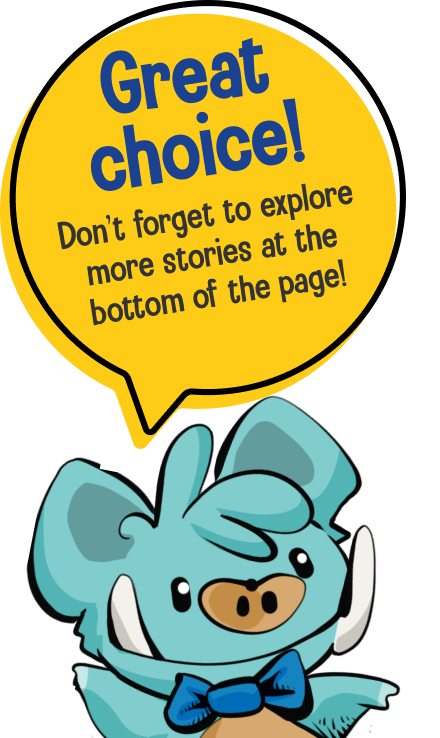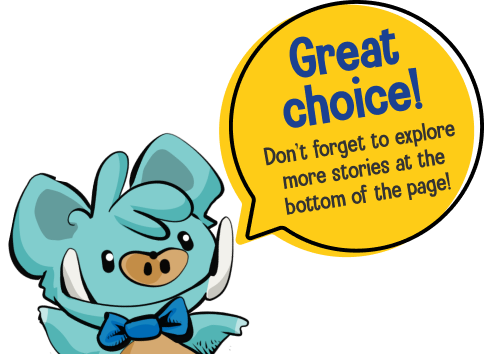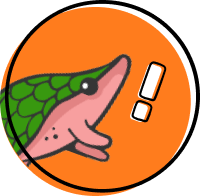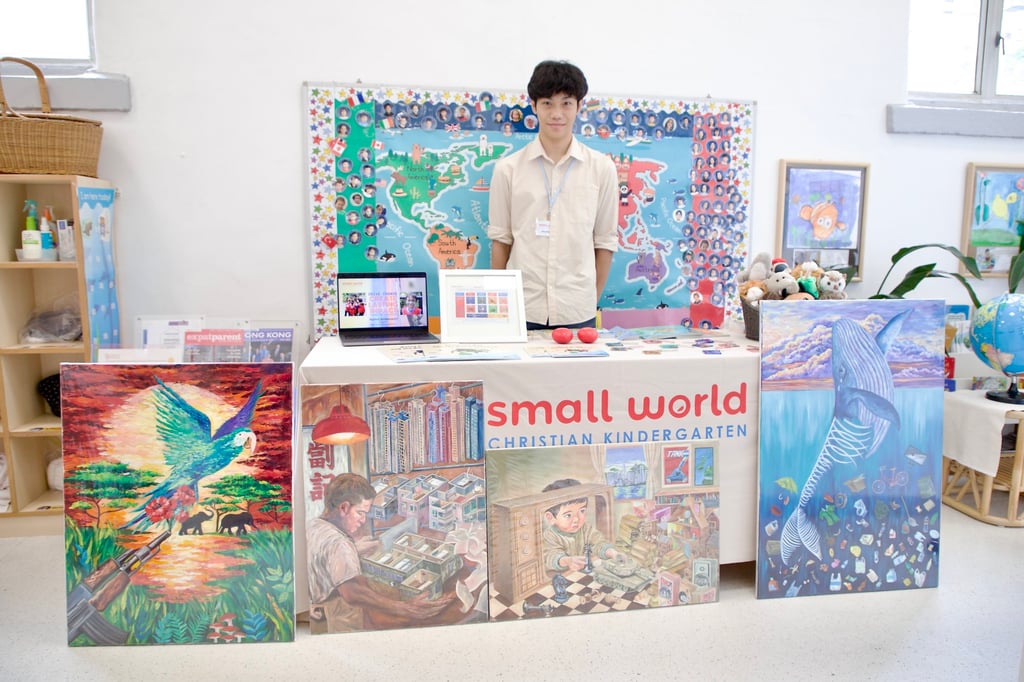
Renaissance College student Kan King-lun unveils art that embodies learning goals and fosters community bonds.





How has King-lun used art to benefit a bigger cause?


Why was the opportunity to make art for Small World particularly meaningful for King-lun?


How is King-lun’s art being used at Small World?


How has King-lun used art to benefit a bigger cause?


Difficulty: Summiteer (Level 3)
Students visiting on open day at Small World Christian Kindergarten in Hong Kong’s Mid-Levels were welcomed by a special guest. They got to meet 16-year-old Kan King-lun.
King-lun is a Renaissance College student who attended Small World when he was younger. His journey came full circle when he returned to the kindergarten to showcase the special project he made for the students. It was a series of 10 animal characters representing the kindergarten’s personal learning goals.
King-lun has been an artist for more than 10 years. He likes using his work to support local communities and the causes he believes in. He was excited to do the Small World project because of his connections with the school.
“This is such a tight community, and a lot of alumni are still in contact. It’s the kind of community that creates such a close bond,” he said.
Community effort
In April of 2023, the principal of Small World asked King-lun to create the characters.
“Each of these characters represents one trait, a personal learning goal created by the school,” King-lun said. “[Students] are taught ... these traits through the characters.”
King-lun’s characters include Charlie the Chameleon, who represents being adaptable. Daisy the Dolphin symbolises respect, and Leo the Lion represents being ethical. His favourite is Cooper the Cat, who symbolises empathy.
October’s open day marked the official launch of these characters. “I feel not only accomplishment but a sense of gratitude,” King-lun said.
Small World students will get to appreciate King-lun’s artwork for years to come because the characters will be incorporated into the school’s curriculum through stories, posters, plushies, keychains and more.

Spreading joy through art
King-lun started doing art when he was a toddler. Art is his passion. He uses it to connect with the world and show his support for causes such as fighting climate change.
He has partnered with different NGOs to help them spread their message. When King-lun was eight years old, he worked with Greenpeace to write and illustrate a children’s book about pollution and plastic waste.
He is also an ambassador for Greenpeace in Hong Kong and Taiwan. The charity recently asked him to be a judge for a reusable cup design competition.
King-lun will continue to spread his love for art through partnerships and collaborations.
“Every time I get an opportunity, it would be a waste not to use it to its fullest. Why not do it?”
Use the puzzle below to test your knowledge of the vocabulary words in the story.
Suggested answers
-
Stop and think: King-lun helped the students at Small World learn personal learning goals with the characters he created. He has also worked with NGOs such as Greenpeace on various projects like a children’s book, and he was involved in their reusable cup competition.
-
Read and answer: This is because King-lun graduated from Small World, so he has ties to the school. According to him, the school is very tight-knit with many alumni still involved in the school and its communities.
-
Consider: Small World is teaching their students personal learning goals by using King-lun’s 10 characters that he created. The characters will be incorporated into the curriculum and serve as a constant reminder for the students. The characters will be on posters, keychains, in stories and even plushies.



able to adjust to new changes or environments
working with another person or group
understanding and sharing feelings, thoughts or experiences with another person
something that is moral or justified
rubbish made of plastic that often turns up in the ocean

able to adjust to new changes or environments
working with another person or group
understanding and sharing feelings, thoughts or experiences with another person
something that is moral or justified
rubbish made of plastic that often turns up in the ocean


Why was the opportunity to make art for Small World particularly meaningful for King-lun?


How is King-lun’s art being used at Small World?